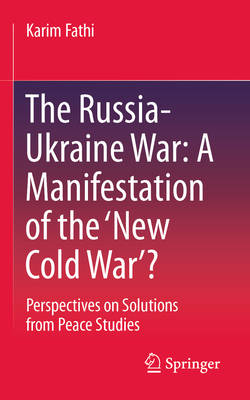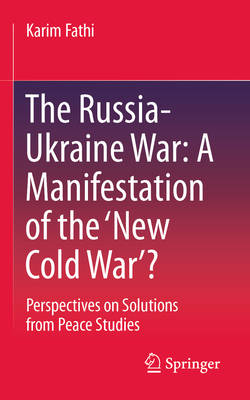
- Afhalen na 1 uur in een winkel met voorraad
- Gratis thuislevering in België vanaf € 30
- Ruim aanbod met 7 miljoen producten
- Afhalen na 1 uur in een winkel met voorraad
- Gratis thuislevering in België vanaf € 30
- Ruim aanbod met 7 miljoen producten
Zoeken
The Russia-Ukraine War: A Manifestation of the 'New Cold War'?
Perspectives on Solutions from Peace Studies
Karim Fathi
Paperback | Engels
€ 44,95
+ 89 punten
Omschrijving
The war in Ukraine has captivated the world. Current coverage is emotional and largely limited to the military aspects of the war. Contributions from Peace and Conflict Studies have been under-represented in the current debate. They are even subject to anti-pacifist criticism. The question of what is needed for a lasting peace is hardly addressed. This question is all the more important as this war has a highly explosive global dimension in its depth, with indirect links to other territorial conflicts, such as the China-Taiwan conflict. In parallel with the war, there is a growing global bloc between East and West and, since Donald Trump took office in January 2025, an internal split in the West with an uncertain outcome. Some observers speak of a 'New Cold War' with the two superpowers, the US and China, and the EU and Russia as the main players. At the same time, the war seems to be acting as a catalyst for a new multilateral world order. The book outlines in a concise and generally understandable form how a multidimensional analysis of complex conflicts such as the Russia-Ukraine war can be approached and how approaches to conflict intervention and foreign policy can be derived from this complexity. It also provides impetus for the further development of Peace Studies into a multi-paradigmatic field of research.
Specificaties
Betrokkenen
- Auteur(s):
- Uitgeverij:
Inhoud
- Aantal bladzijden:
- 310
- Taal:
- Engels
Eigenschappen
- Productcode (EAN):
- 9783658485634
- Verschijningsdatum:
- 28/07/2025
- Uitvoering:
- Paperback
- Formaat:
- Trade paperback (VS)
- Afmetingen:
- 125 mm x 194 mm
- Gewicht:
- 421 g

Alleen bij Standaard Boekhandel
+ 89 punten op je klantenkaart van Standaard Boekhandel
Beoordelingen
We publiceren alleen reviews die voldoen aan de voorwaarden voor reviews. Bekijk onze voorwaarden voor reviews.








